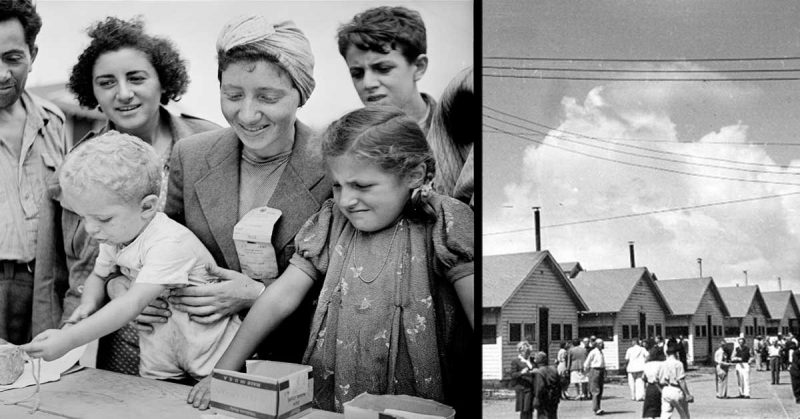LIFE magazine republished a series of photos on World Refugee Day last June. They were taken in 1944 by Alfred Eisenstaedt at a WWII refugee camp in Oswego, NY. The first image was of a woman (Eva Bass) and her children as they arrived at the camp.
The photos were seen by a lot of people, but very few had a personal interest in them. The two children that appeared with Bass in the photo were her son Jack Bass (born Joachim, almost 12 when the picture was taken) and her daughter, Gloria Fredkove (born Yolanda Bass, 15 months old at the time of the picture.)
That photo was a major part of Frekove’s life.
“I had shown this picture of my family in LIFE Magazine to a good friend of mine. This was back in the early ‘80s. She called me and said, ‘Gloria, I’m reading a book about refugees during World War II, and the picture that you showed me is in it, and it mentions your name and everything,’” Fredkove told LIFE.
She was shocked when she find out about this. She thought that this was a small thing that happened and that nobody noticed since her mom didn’t really say too much about them coming over.”
The book in question was Haven, by Ruth Gruber. As told in the book, Eva Bass was a singer in Paris. She fled to Italy was jailed for her political views and her religion. She carried Yolanda in one arm, and when Joachim had walked as far as he could, she carried him in the other arm for 60 kilometers, through the front lines in order to get to the Allies. After reaching America, Bass Americanized her children’s names.
Fredkove was too young to remember Oswego. She learned most of what she knows about her family from Gruber’s book. Still, there is much that she does not know. For instance, Fredkove is aware that her mother was pregnant when she arrived in America and gave birth to a baby girl. Fredkove has no idea what happened to her sister. She also does not know the identity of her father.
“Those are pieces that make me at different times angry, sad, depressed—but I have had a pretty good life,” she says.
The photo itself used to be a source of shame for Fredkove when she was younger. People felt sorry for her but also judged her for being different.
“I always wanted to fit in as a child, and the minute you see that picture connected with the word refugee, you are an outsider,” she added.
After reading Gruber’s book and beginning to speak to school children about the importance of remembering the Holocaust, she now views the picture as something important and something to share, not hide.
“I realized that this story is not just about my family,” Fredkove says. “It’s about people who are fleeing from injustice and prejudice and persecution and death. And that is a universal—it’s not just about me.”
